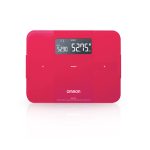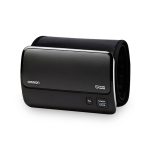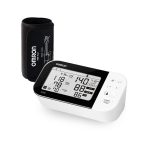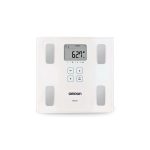Jet, Ultrasonic, and Mesh Nebulizers: Key Differences Explained
July 10, 2025 2025-07-10 10:25Jet, Ultrasonic, and Mesh Nebulizers: Key Differences Explained
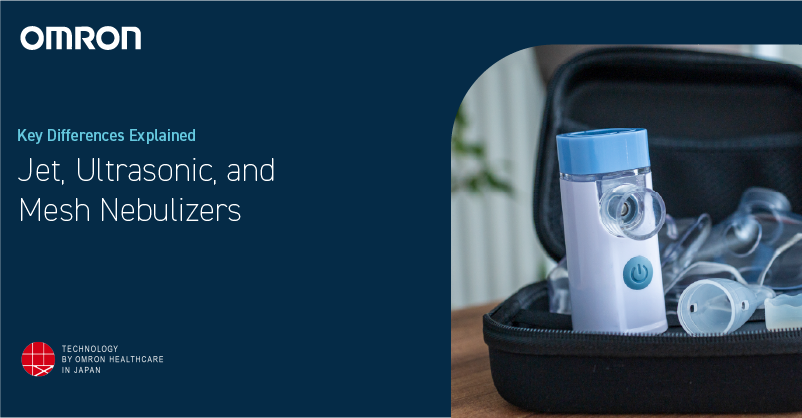
Jet, Ultrasonic, and Mesh Nebulizers: Key Differences Explained
For individuals managing respiratory conditions like asthma, COPD, or cystic fibrosis, nebulizers have become essential therapeutic devices. Unlike standard inhalers, nebulizer machines transform liquid medication into a fine mist that can be easily inhaled deep into the lungs. However, not all nebulizer technology is created equal. This guide explores the key differences between jet, ultrasonic, and mesh nebulizers to help you make an informed choice for your respiratory health needs.
Understanding Nebulizer Technology
A nebulizer machine (sometimes called an inhaler machine or nebulizer machine) is a device that converts liquid medication into an aerosol mist for inhalation. This delivery method is particularly beneficial for patients who struggle with traditional inhalers or require higher medication doses.
According to the American Lung Association, nebulizers can be especially helpful for young children, elderly patients, or anyone who finds it challenging to coordinate their breathing with a traditional inhaler.
Let’s explore the three main types of nebulizer technology available today:
Jet Nebulizers: The Traditional Approach
Jet nebulizers, also known as compressor nebulizers, are the most traditional and widely used nebulizer type.
How Jet Nebulizers Work
A jet nebulizer machine uses compressed air to convert liquid medication into an aerosol. The compressor forces air through a narrow tube, creating a low pressure that pulls the medication up from the cup. When the air and medication meet, the liquid breaks into tiny droplets that form the inhalable mist.
Advantages of Jet Nebulizers
- Cost-effective: Generally, the most affordable nebulizer option
- Reliability: Well-established technology with decades of clinical use
- Durability: Typically, robust with fewer delicate components
- Versatility: Can nebulize most medication formulations
Limitations
- Size and noise: Compressor units can be bulky and noisy during operation
- Power requirements: Most models require electrical outlets
- Treatment time: Sessions typically take 10-15 minutes
- Medication waste: Some medication remains in the nebulizer cup after treatment
The Johns Hopkins Asthma & Allergy Center notes that jet nebulizers are particularly suitable for patients who need higher medication doses or have difficulty with coordination.
Ultrasonic Nebulizers: The Quiet Alternative
Ultrasonic nebulizer machines represent the second generation of nebulizer technology.
How Ultrasonic Nebulizers Work
An ultrasonic nebulizer uses high-frequency vibrations (typically 1-2 MHz) produced by a piezoelectric crystal to create aerosol particles. These vibrations are transmitted through water to the medication, breaking it into a fine mist without requiring a compressor.
Advantages of Ultrasonic Nebulizers
- Quieter operation: Functions with minimal noise compared to jet nebulizers
- Faster delivery: Generally, delivers medication more quickly than jet models
- Compact design: Usually smaller and more portable than compressor models
- Higher output: Produces more aerosol per minute
Limitations
- Medication limitations: Not suitable for certain medications, particularly suspensions and more viscous solutions
- Medication heating: Can increase medication temperature, potentially affecting stability
- Maintenance requirements: Requires regular cleaning to prevent bacterial growth
- Cost: Typically, more expensive than jet nebulizers
Research published in the European Respiratory Journal has shown that ultrasonic nebulizers produce smaller particle sizes, which may improve lung deposition for certain medications.
Mesh Nebulizers: The Advanced Option
Mesh nebulizers represent the latest innovation in nebulizer technology and are gaining popularity for their efficiency and portability.
How Mesh Nebulizers Work
A mesh nebulizer uses a vibrating mesh or membrane with thousands of microscopic holes to generate aerosol. When the mesh vibrates, it forces liquid medication through these tiny holes, creating a precise, uniform mist.
Advantages of Mesh Nebulizers
- Highly efficient: Minimal medication waste compared to other types
- Portable nebulizer options: Many models are battery-operated and pocket-sized
- Silent operation: Typically, the quietest nebulizer type
- Faster treatments: Most treatments complete in 5-7 minutes
- Consistent particle size: Delivers more uniform droplets for optimal lung deposition
Limitations
- Higher initial cost: Premium technology comes at a premium price
- Delicate components: The mesh requires careful handling and cleaning
- Battery dependency: Portable models require regular charging
- Specific cleaning requirements: Mesh can clog if not properly maintained
A clinical review in Respiratory Medicine concluded that mesh nebulizers offer superior aerosol delivery efficiency compared to jet and ultrasonic nebulizers for many medications.
Choosing the Right Nebulizer for Your Needs
When selecting the best nebulizer machine for your specific situation, consider the following factors:
For Adults
The best nebulizer machine for adults depends largely on the specific condition being treated and lifestyle factors:
- Active lifestyle: A portable nebulizer machine like a battery-operated mesh model may be ideal
- Home use primarily: A reliable compressor nebulizer kit might be most cost-effective
- Multiple medications: Consider a nebulizer compatible with all your prescriptions
For Children
When choosing a nebulizer for children, consider:
- Noise level: Quieter models (mesh or ultrasonic) may reduce anxiety
- Treatment time: Faster nebulization helps maintain a child’s attention
- Ease of use: Simple operation for caregivers or older children to manage independently
- Child-friendly designs: Some nebulizer kits feature pediatric masks with animal designs
For Specific Conditions
According to the Global Initiative for Asthma (GINA), medication particle size and deposition patterns can significantly impact treatment effectiveness for different respiratory conditions.
- Asthma: Mesh nebulizers may provide more efficient delivery of bronchodilators
- COPD: Jet nebulizers can effectively deliver larger medication volumes often needed
- Cystic Fibrosis: Specialized mesh nebulizers are often recommended for antibiotic delivery
Maintenance and Care
Regardless of the nebulizer type you select; proper maintenance is crucial:
- Daily cleaning: Rinse the nebulizer cup/chamber after each use
- Regular disinfection: Follow manufacturer guidelines for disinfection frequency
- Component replacement: Replace nebulizer kits, filters, and other parts as recommended
- Professional servicing: Have compressor models checked annually
The CDC provides comprehensive guidelines for cleaning and disinfecting nebulizers to prevent infection.
OMRON’s Nebulizer Range
At OMRON Healthcare, we offer a comprehensive range of nebulizer solutions to meet diverse patient needs:
- Compressor nebulizers: Reliable, cost-effective options for home use
- Ultrasonic technology: Quiet, efficient models for comfortable treatment
- Mesh nebulizers: Our most advanced portable nebulizer options for on-the-go treatment
Each OMRON nebulizer machine is designed with patient comfort and clinical efficacy in mind, backed by decades of medical device expertise
Conclusion
The choice between jet, ultrasonic, and mesh nebulizers ultimately depends on your specific health needs, lifestyle, and budget. While traditional compressor nebulizers remain reliable workhorses, advancements in ultrasonic and particularly mesh technology have revolutionized respiratory treatment with more efficient, portable, and user-friendly options.
Consult with your healthcare provider to determine which nebulizer type best suits your specific condition and medication regimen. With the right nebulizer machine, you can ensure optimal delivery of your respiratory medications and better management of your respiratory health. Explore OMRON’s range of clinically validated nebulizers to find the right solution for your respiratory care.


